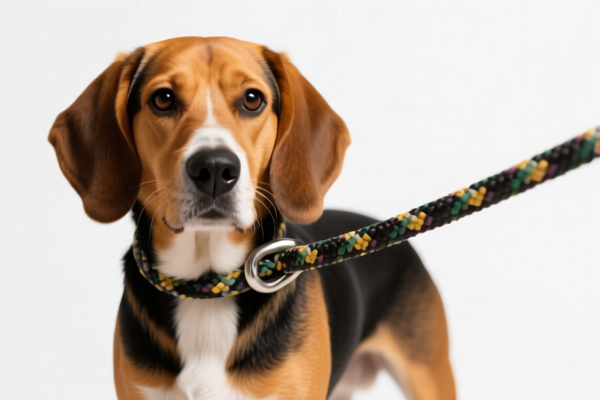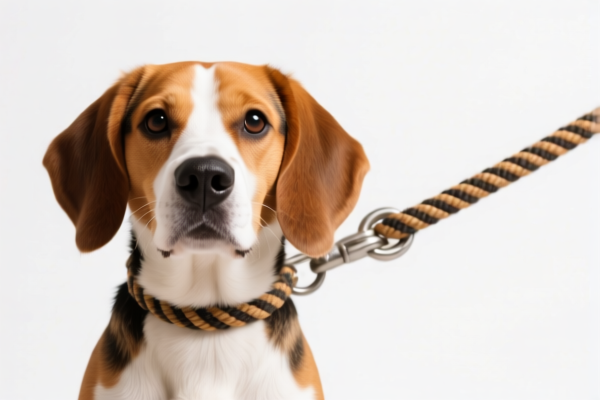| HS Code | Official Doc | Tariff Rate | Origin | Destination | Effective Date |
|---|---|---|---|---|---|
| 5607909000 | Doc | 61.3% | CN | US | 2025-05-12 |
| 5607493000 | Doc | 58.6% | CN | US | 2025-05-12 |
| 5609004000 | Doc | 58.9% | CN | US | 2025-05-12 |
| 5609003000 | Doc | 59.5% | CN | US | 2025-05-12 |
| 5404198080 | Doc | 61.9% | CN | US | 2025-05-12 |
| 5404191000 | Doc | 57.7% | CN | US | 2025-05-12 |
| 4201003000 | Doc | 57.4% | CN | US | 2025-05-12 |
| 4201006000 | Doc | 57.8% | CN | US | 2025-05-12 |
| 3926905900 | Doc | 57.4% | CN | US | 2025-05-12 |
| 3926906090 | Doc | 59.2% | CN | US | 2025-05-12 |
| 3916903000 | Doc | 61.5% | CN | US | 2025-05-12 |




Dog Walking Rope
A dog walking rope, also commonly referred to as a leash, is a restraint used for controlling and guiding a dog during walks and other outings. It facilitates communication between the handler and the dog, promoting safety and a positive walking experience.
Material
Dog walking ropes are constructed from a variety of materials, each offering different characteristics:
- Nylon: A durable, affordable, and widely available synthetic material. It’s resistant to abrasion but can fray over time.
- Polyester: Stronger and more resistant to stretching than nylon, with lower elasticity. It also resists mildew and UV damage better.
- Leather: A classic material known for its durability and comfort. Leather leashes soften with use and offer a natural feel, but require more maintenance.
- Chain: Typically made of stainless steel, chain leashes are very durable and resistant to chewing, but can be heavier and less comfortable for both dog and handler.
- Biothane: A coated synthetic material that is waterproof, odor-resistant, easy to clean, and highly durable.
- Rope (Cotton/Hemp): Often used for training or specific styles of leashes, these are less common for everyday use due to lower durability and potential for stretching.
Purpose
- Control: Provides a means to steer and manage the dog's movements, preventing them from running into dangerous situations or unwanted areas.
- Safety: Keeps the dog secure and prevents them from escaping, particularly in public areas.
- Communication: Allows the handler to convey commands and signals to the dog during walks.
- Training: Used in conjunction with positive reinforcement techniques to teach loose-leash walking and other behaviors.
Function
The primary function is to connect the dog to the handler, providing a physical link for guidance and control. Leashes transfer signals from the handler's hand movements to the dog, allowing for directional changes, speed adjustments, and reinforcement of desired behaviors.
Usage Scenarios
- Everyday Walks: The most common use, for leisurely strolls and exercise.
- Training Sessions: Essential for teaching loose-leash walking, recall, and other commands.
- Public Areas: Required in many locations for legal and safety reasons.
- Dog Parks: Used to maintain control and prevent interactions with other dogs if needed.
- Hiking/Outdoor Adventures: Provides control and security in more challenging environments.
Common Types
- Standard Leash: Typically 4-8 feet long, made of nylon, polyester, or leather.
- Retractable Leash: Features a spring-loaded mechanism that allows the leash to extend and retract, offering varying degrees of freedom. Often controversial due to safety concerns.
- Slip Leash (Martingale Leash): A combination leash and collar, used for dogs that may slip out of traditional collars.
- Double Leash (Coupler): Allows for walking two dogs simultaneously.
- Hands-Free Leash: Worn around the waist or shoulder, providing a hands-free walking experience.
- Traffic Leash (Short Leash): A shorter leash, typically 1-3 feet long, used for close control in crowded areas.
- Prusik Leash: A specialized leash used in dog sports like agility, offering adjustable length and control.
Dog walking ropes fall under articles used for animals, specifically for leading or restraining. Based on the provided information, the following HS codes are relevant:
-
4201003000: Saddlery and harness for any animal (including traces, leads, knee pads, muzzles, saddle cloths, saddle bags, dog coats and the like), of any material: Dog leashes, collars, muzzles, harnesses and similar dog equipment. This code specifically covers dog leashes (which includes ropes used for walking dogs), collars, muzzles, and harnesses.
- 42: Chapter 42 covers articles of leather or of composition leather, not elsewhere specified or included. In this case, it encompasses articles used for animals.
- 01: Heading 01 refers to saddlery and harness for any animal.
- 003000: Subheading 003000 specifically identifies dog leashes, collars, muzzles, harnesses, and similar equipment.
-
4201006000: Saddlery and harness for any animal (including traces, leads, knee pads, muzzles, saddle cloths, saddle bags, dog coats and the like), of any material: Other. This code is a broader category for animal saddlery and harness not specifically listed in 4201.00.30.00.
- 42: Chapter 42 covers articles of leather or of composition leather, not elsewhere specified or included.
- 01: Heading 01 refers to saddlery and harness for any animal.
- 006000: Subheading 006000 covers other articles within this category.
Regarding HS code 4201003000 and 4201006000, the material composition of the dog walking rope should be verified to ensure accurate classification.
Customer Reviews
No reviews yet.